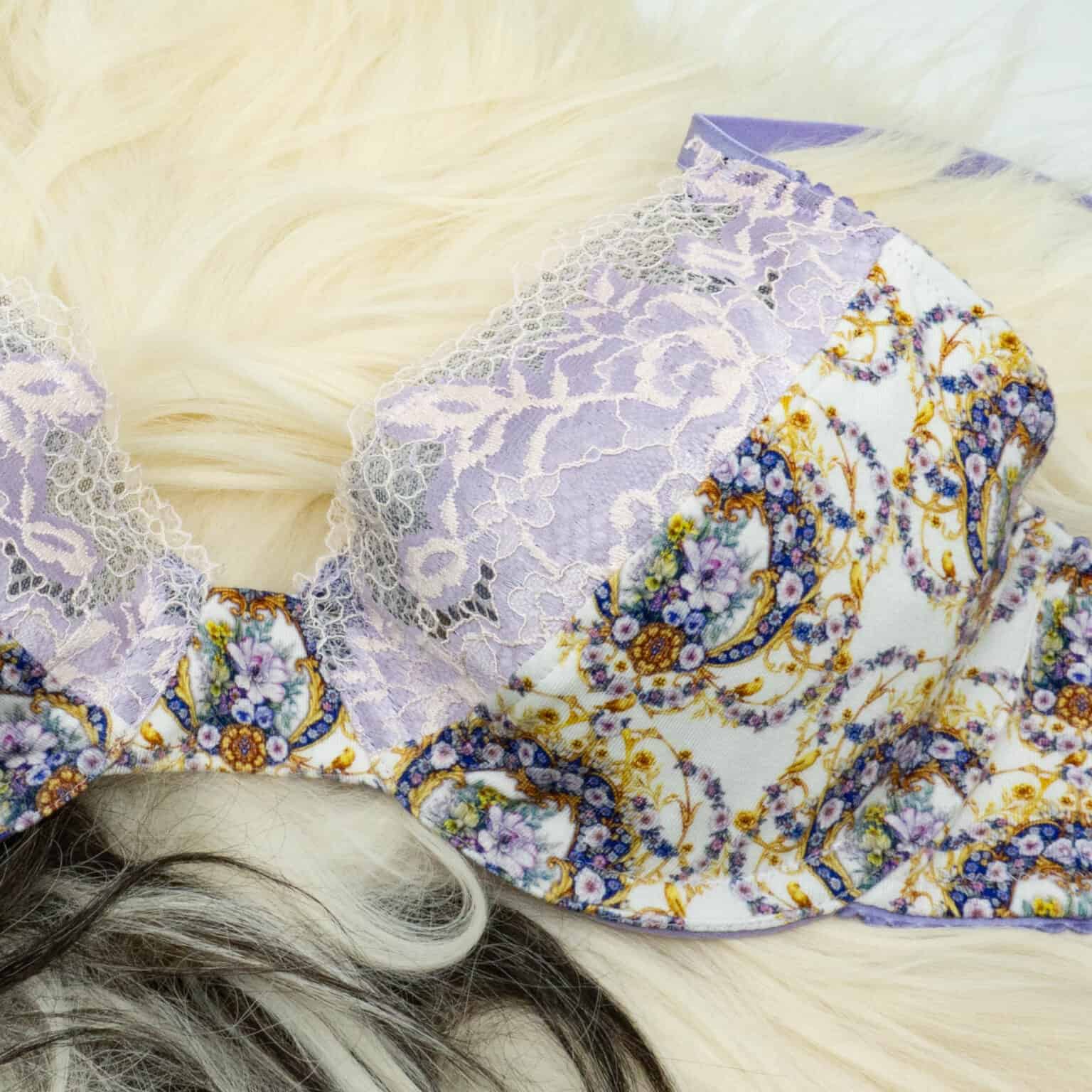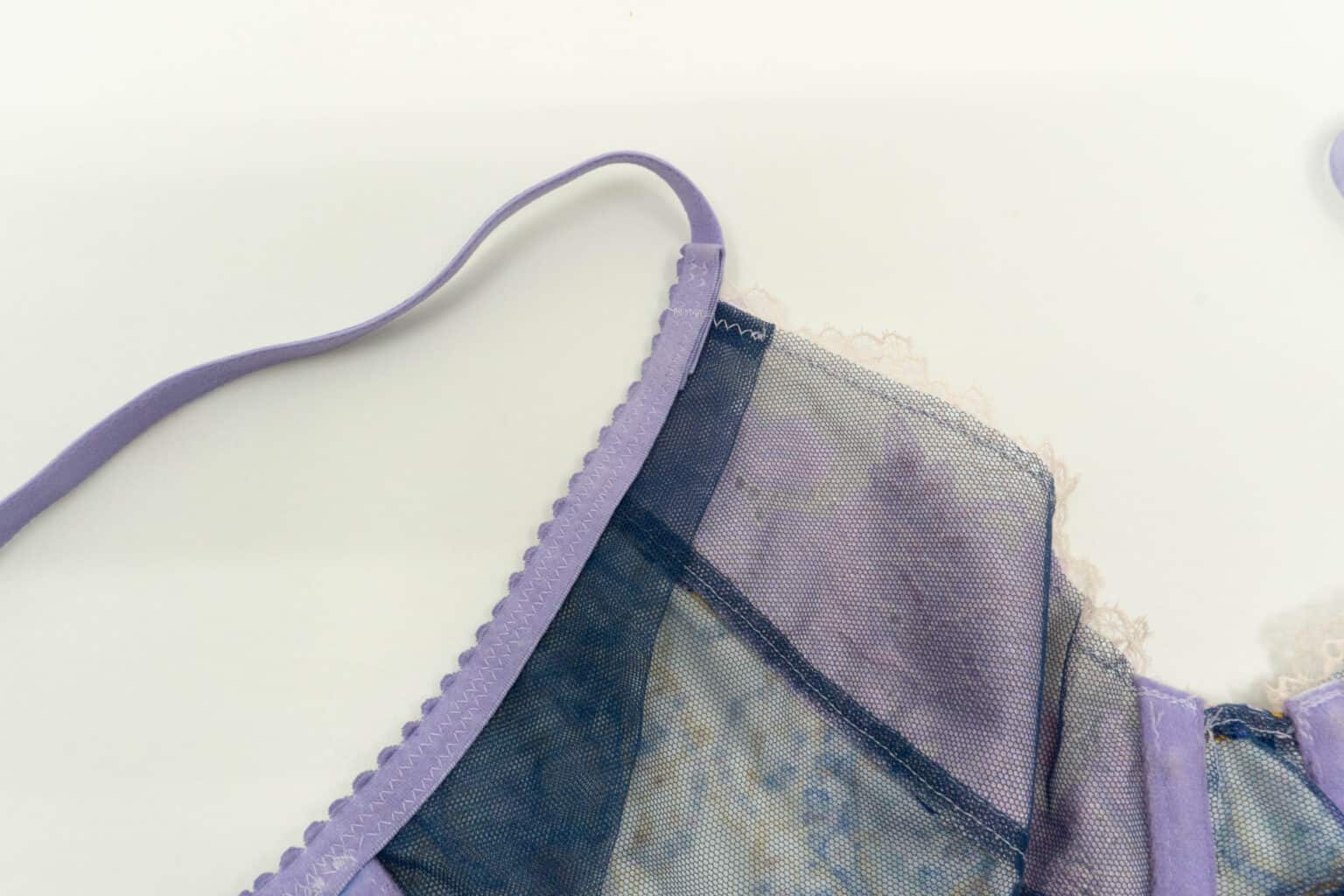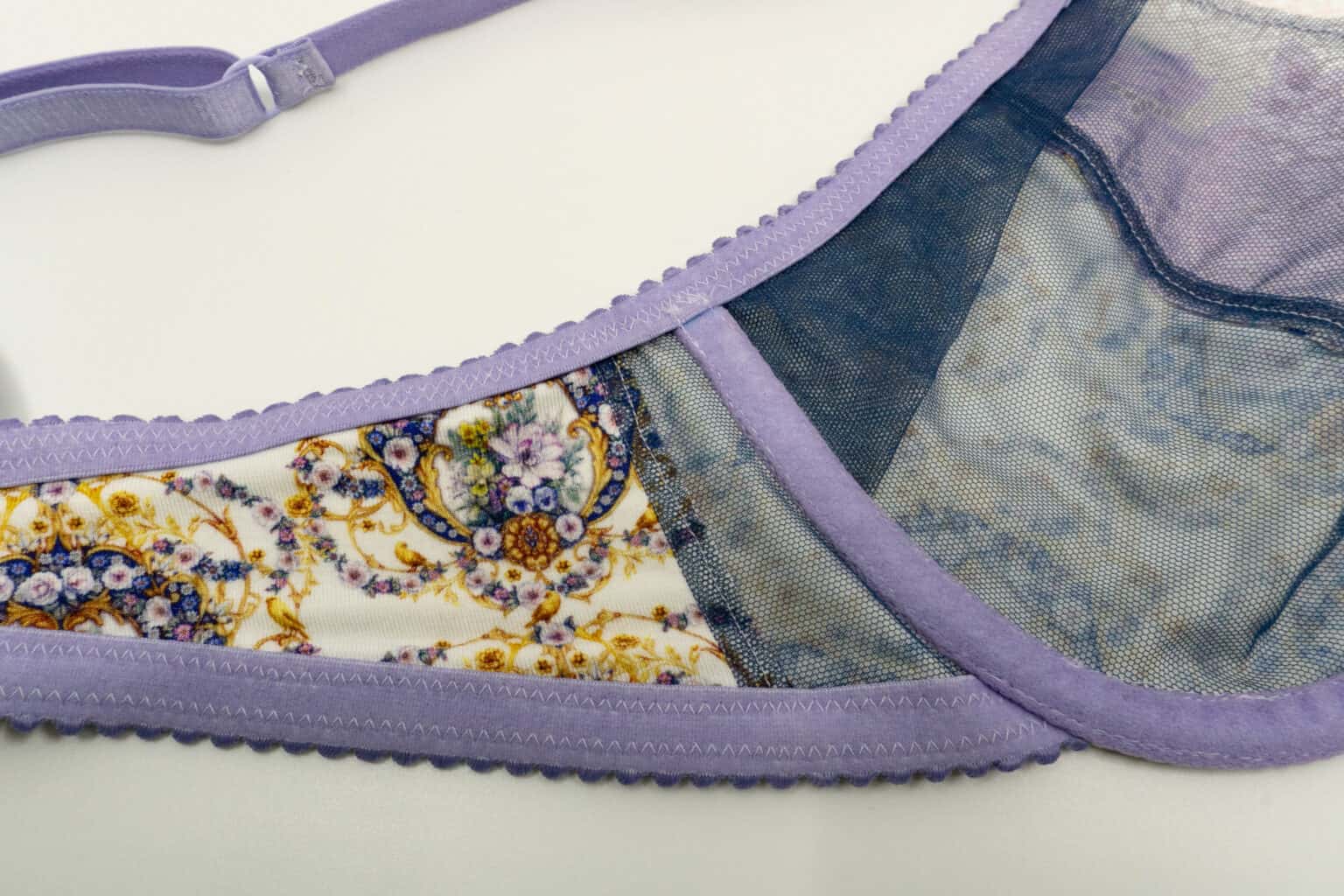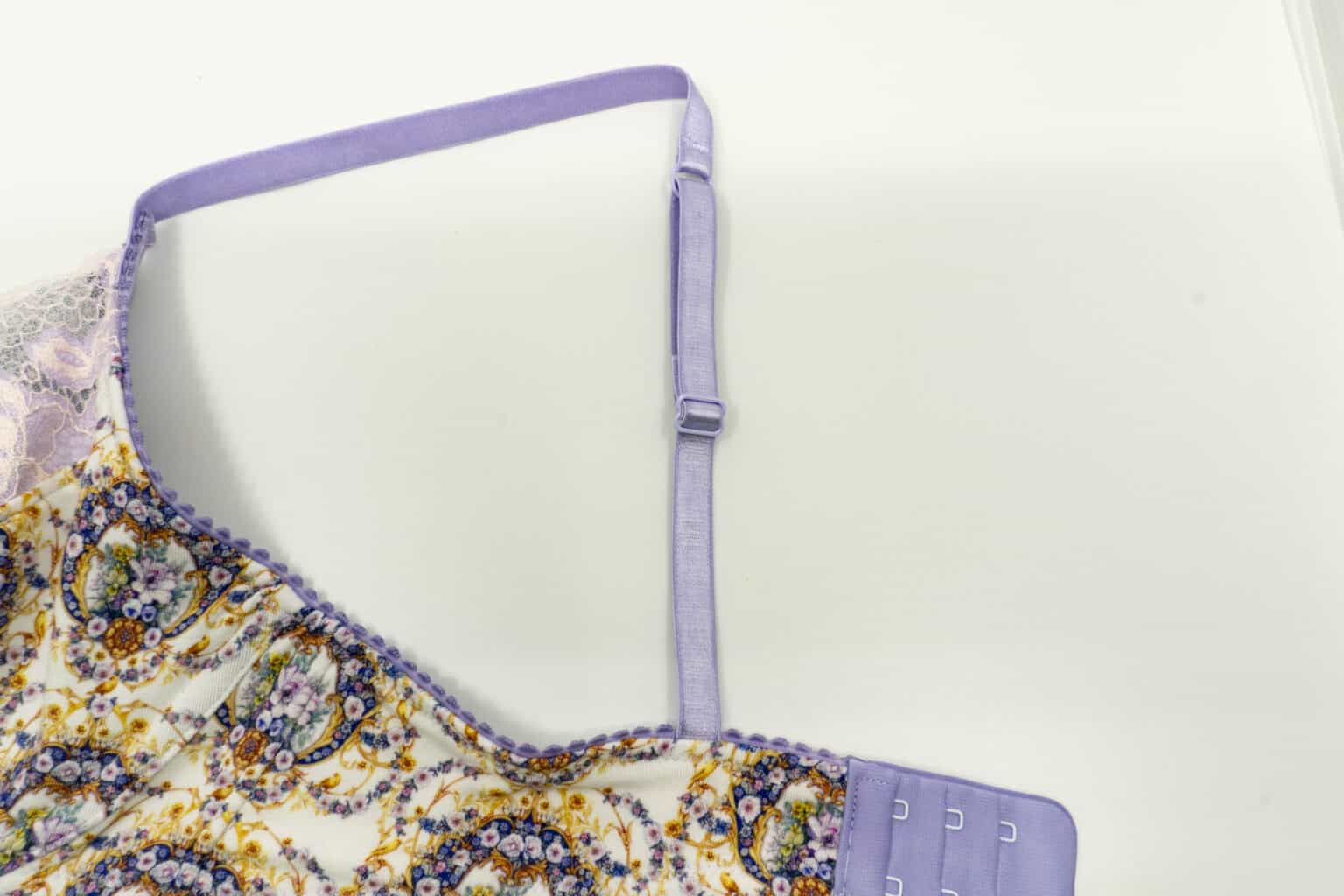Demystifying Bra Sewing Supplies
Learning to sew a bra has been an overwhelming and rewarding experience, with much left to learn. I’m definitely not an expert on the subject, but I think having a beginner’s perspective can be helpful for other novices since basic items can be skipped over by more experienced sewists.

I have a companion YouTube video that covers bra alterations I made to Orange Lingerie’s Lansdowne Bra. It’s an overview of things you might want to alter when sewing your own bra, but you’ll need to figure out the specifics for your unique shape. There wasn’t nearly enough time to discuss all the material options, so we’re going to cover them here!
Each bra pattern is going to be constructed with its own recommended fabrics, which you can follow or change depending on how much time you want to spend altering the pattern. The Orange Lingerie Lansdowne bra requirements are going to be what we use to demystify fabrics.
Stretch Lace
This is the most straight forward of the fabric requirements! There’s two types of lace: stretch and non-stretch, so just pick whichever your pattern requires. There’s so many options you’ll be sure to find one you love. This can be used on the inner cup only, or throughout the bra, depending on what the pattern calls for.
Outer Cup, Bridge, & Frame Fabrics
My bra pattern called for “low to no movement opaque fabrics such as tricot” for the outer cup, bridge, and side band. Tricot is a nylon mesh-like fabric. It’s not particularly soft and just comes in solid colors. What this means for you as a sewist, is the bra pattern was designed to be sewn with non-stretch fabrics. You could use a non-stretch embroidered lace if you wanted to put something prettier on the outside. You could also use duoplex, which is a stable polyster fabric that would require no lining, but likely isn’t very breathable.
However, I found a rayon bamboo knit fabric I really liked and wanted to use for this pattern. I also didn’t want layers of nylon on my bra for breathability. So, if you’d like to use a stretch fabric for a pattern designed for non-stretch fabric, you will simply have to line everything with a non-stretch fabric. Basically, you can make the outside of the bra whatever fabric you want, but you will need to add support and stability to the inside if your pattern calls for non-stretch fabric.
Lining Fabrics
The Lansdowne bra has a lining fabric on the cups and bridge only, however, if you’re going to use a stretchy material for the exterior, you’ll want to use the lining on the side band as well. The back band needs to stay completely stretchy and we’ll cover that in a bit.

As for fabric choices, it depends on how much stability you want. I didn’t need too much stability so I chose a bra tulle for my lining. Bra tulle is a light mesh nylon that has some stretch in one direction. If you’d like more support, you can use 2 layers of tulle with the stretch going in opposite directions or you can use tricot.
Band Fabrics
Honestly, the band fabrics were the most confusing to figure out. Most of the fabrics used are specialty, so I had never heard of them to begin with. The two types of fabric I saw mentioned the most were power mesh and power net. Again, which fabric you choose depends on the level of support you want. Power mesh is a lightweight nylon/spandex fabric with a 4-way stretch. This fabric isn’t as readily available as power net. Power net is a heavier weight nylon/spandex fabric. Both mesh and net have holes in the fabric for breathability, but I didn’t use either since my goal is to use more natural fibers.

For a natural route, you can use cotton jersey for your band. I used a bamboo rayon jersey and so far have had no issues. I did use two layers of jersey though, with the stretch going the same direction, so there would be extra support and stability.
Notions
My pattern used different widths of elastics depending on which cup size range you are in. From what I’ve seen, kits will make you pick widths for elastics and if you accidentally pick the wrong width, you can always alter the pattern to match the elastics you have. If you want to keep it simple, look for band elastic with picot edges. There’s a lot of options and I think a lot of patterns use that elastic compared to fold over or wide elastics.
Strap elastic is similar to band elastic with choices for how wide you would like your strap. Otherwise, I don’t think there’s much strap elastic variety. It is different from band elastic though! It will be shinier on one side and both edges will be smooth.
Hook and eye closures vary depending on how much support you want in your bra. They are the clasp in the back of the bra and can have a height between 2 and 4 hooks. I’m sure there’s larger sets for specialty bras out there as well!
Underwire casing is the material that goes around the wire. It will most commonly be sold as plush underwire casing, but I’ve also come across taffeta.
Rings and sliders are what allows your bra straps to change size and be attached to the bra itself. Each pattern will require a different set-up or you can modify your strap build to suit your needs. For example, I heavily altered the straps on the Lansdowne bra, so now I need 4 rings and 2 sliders. The rings and slider I’ve seen are either coated in plastic and can be dyed or are metal.

Suppliers
There are a few bra suppliers out there that have a wide array of supplies that range from kits to dyeing the notions yourself. I’ll provide the ones I know below, but this is not an exhaustive list – if I’ve missed anyone please let me know!
- Bra Builders has a lot of custom dyed notions and a few kits available.
- Tailor Made Shop has a decent organic cotton jersey selection as well as notions, laces, and synthetic fabrics.
- Emerald Erin has a lot of underwires to choose from, kits, and swimwear specific supplies.
- Sew Wardrobe has a ton of lace, elastics, and straps to choose from.
I hope you found this blog helpful wherever you are in your bra sewing journey and if you’d like to know more about alterations, check out my YouTube video!